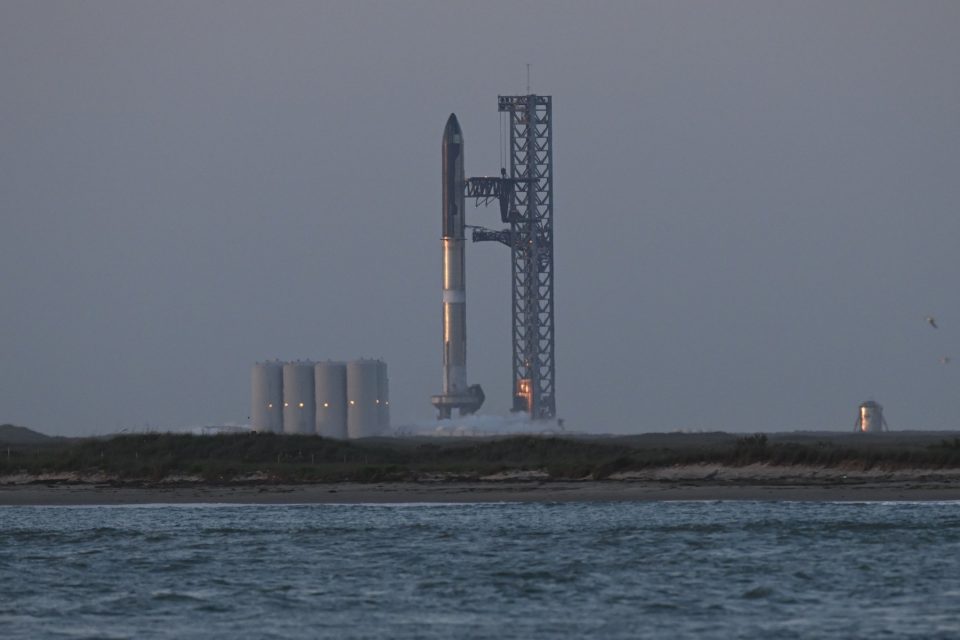More News
World’s Biggest Rocket, SpaceX Starship Set For Test Flight

The most powerful rocket ever built, SpaceX Starship designed to send astronauts to the Moon and Mars and beyond is set for its first test flight.
Fueling was underway and the giant rocket was scheduled to blast off from Starbase, the SpaceX spaceport in Boca Chica, Texas, at 8:20am Central Time (1320 GMT), SpaceX said.
READ ALSO: SpaceX Starship
Fallback times are planned for later in the week if Monday’s launch attempt is delayed – something billionaire SpaceX founder Elon Musk said was a distinct possibility.
“It’s a very risky flight,” Musk said in a live event on Twitter Space on Sunday. “It’s the first launch of a very complicated, gigantic rocket.
“There’s a million ways this rocket could fail,” he added. “We’re going to be very careful and if we see anything that gives us concern, we’ll postpone.”
Musk said he wanted to “set expectations low” because “probably tomorrow will not be successful – if by successful one means reaching orbit.”
The United States space agency NASA has picked the Starship spacecraft to ferry astronauts to the Moon in late 2025 – a mission known as Artemis III – for the first time since the Apollo programme ended in 1972.
Starship consists a 164-foot (50-meter) tall spacecraft designed to carry crew and cargo that sits atop a 230-foot tall first-stage Super Heavy booster rocket.
Collectively referred to as Starship, the spacecraft and the Super Heavy rocket have never flown in combination together, although there have been several sub-orbital test flights of the spacecraft alone.
If all goes according to plan, the Super Heavy booster will separate from Starship about three minutes after launch and splash down in the Gulf of Mexico.
Starship, which has six engines of its own, will continue to an altitude of nearly 150 miles, completing a near-circle of the Earth before splashing down in the Pacific Ocean about 90 minutes after launch.
“If it gets to orbit, that’s a massive success,” Musk said.
“If we get far enough away from the launchpad before something goes wrong then I think I would consider that to be a success,” he said. “Just don’t blow up the launchpad.
“The payload for this mission is information,” he said. “Information that allows us to improve the design of future Starship builds.”
Send Us A Press Statement Advertise With Us Contact Us
And For More Nigerian News Visit GWG.NG


